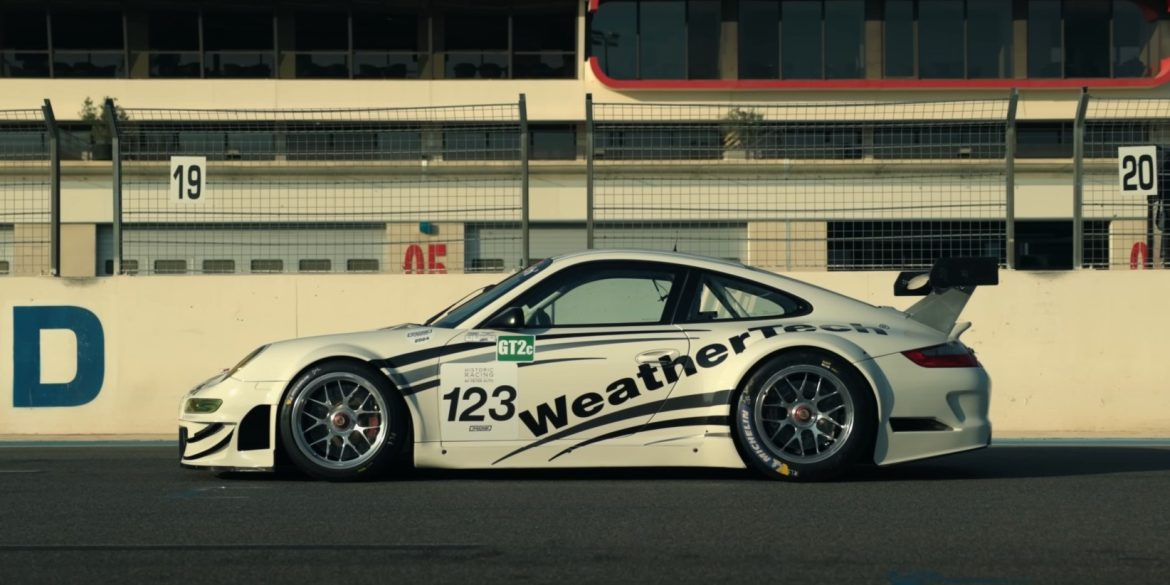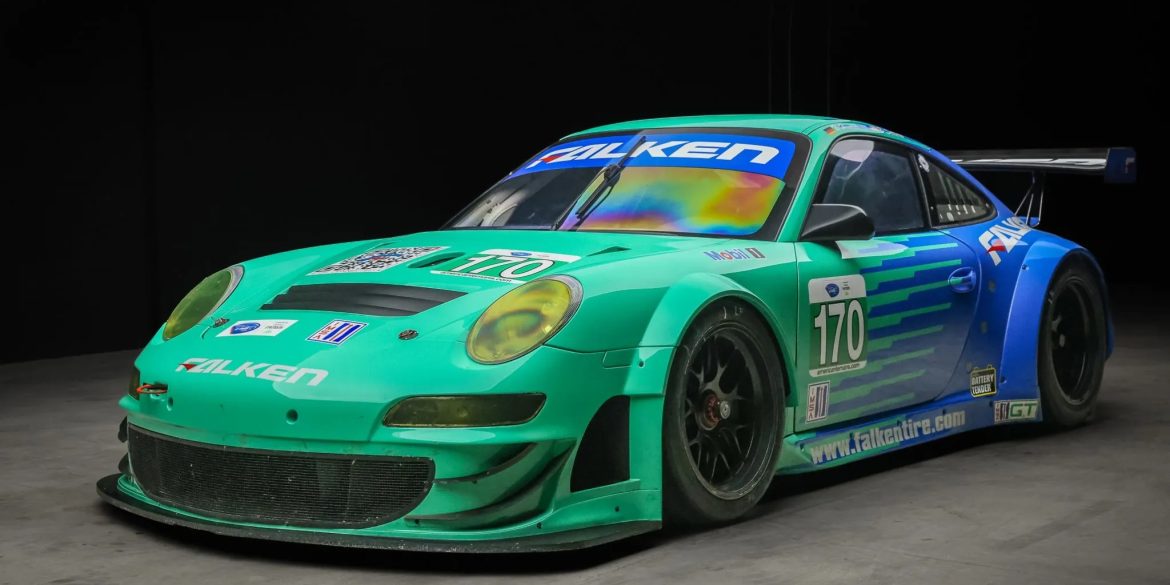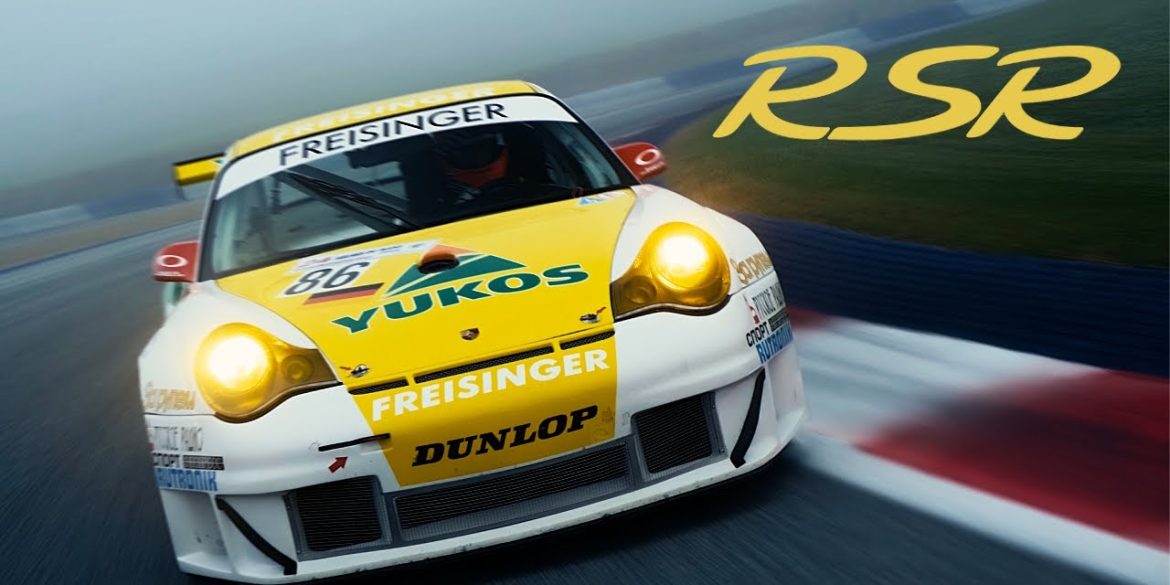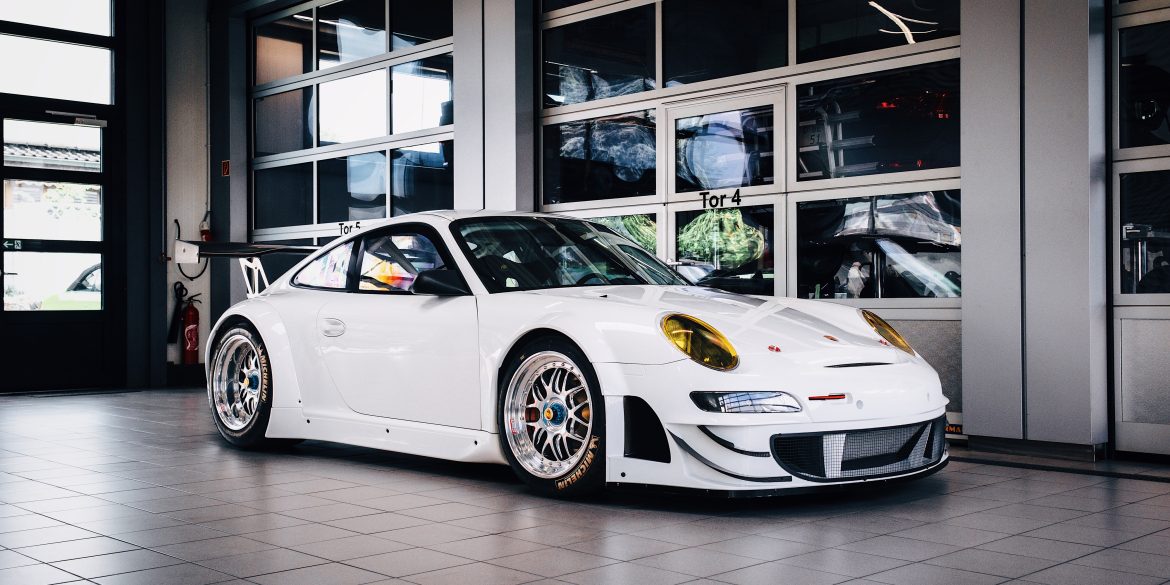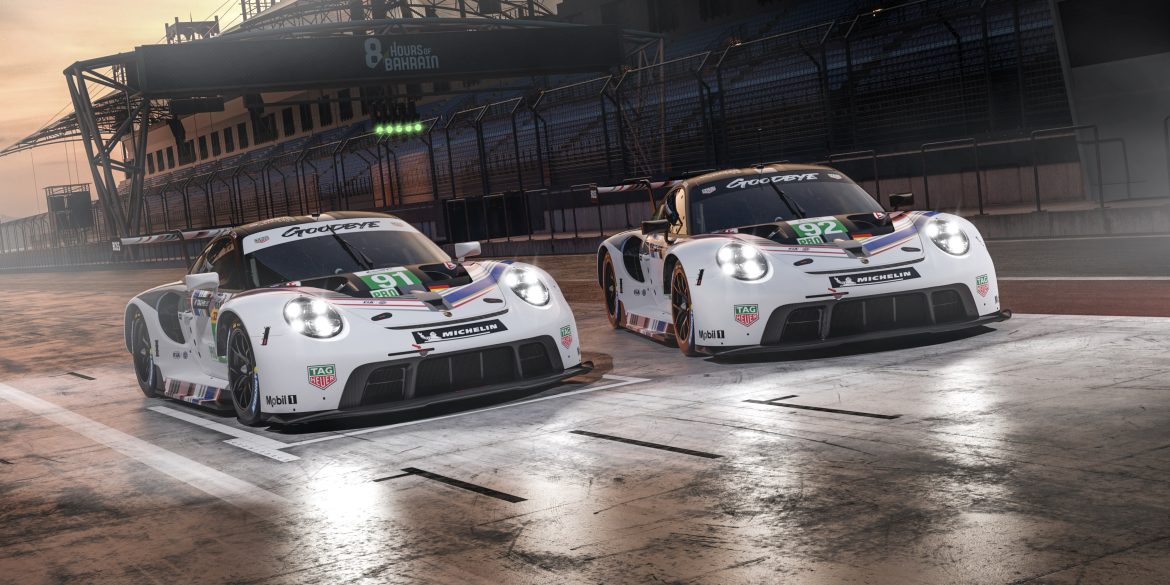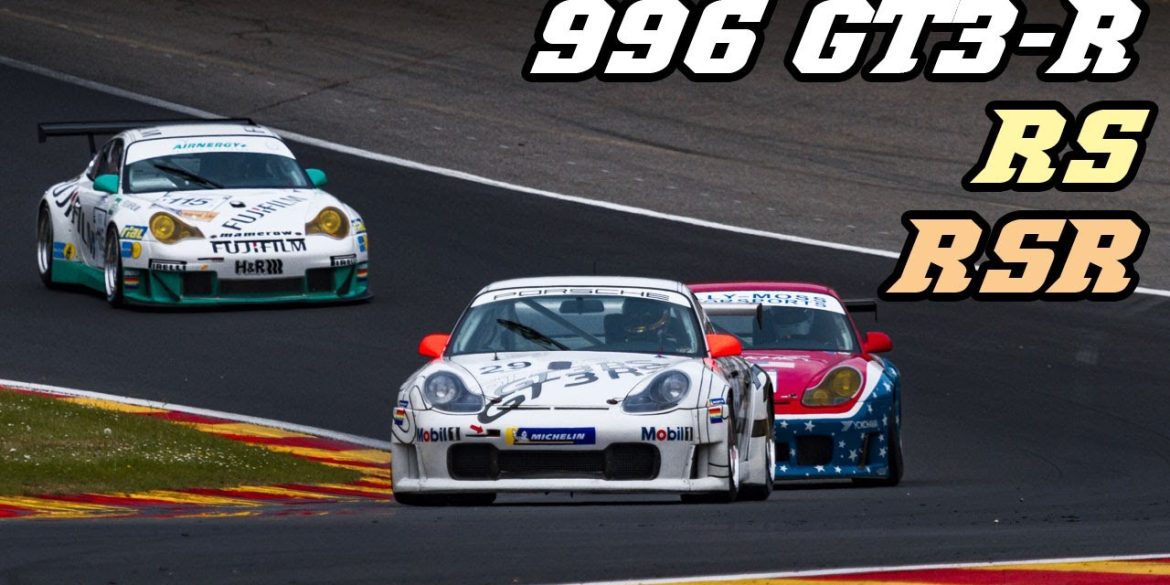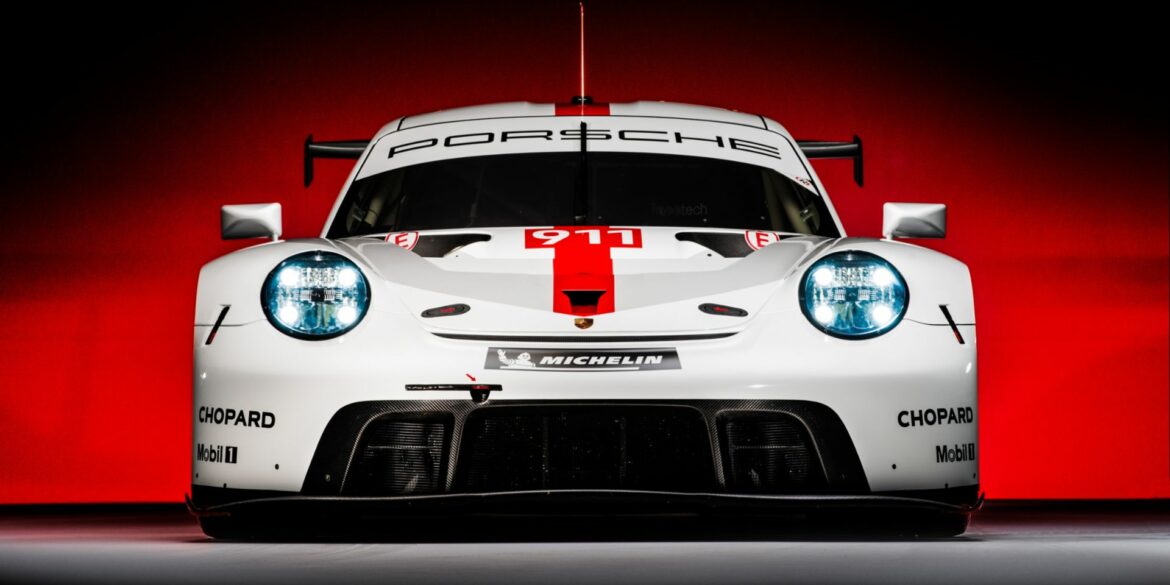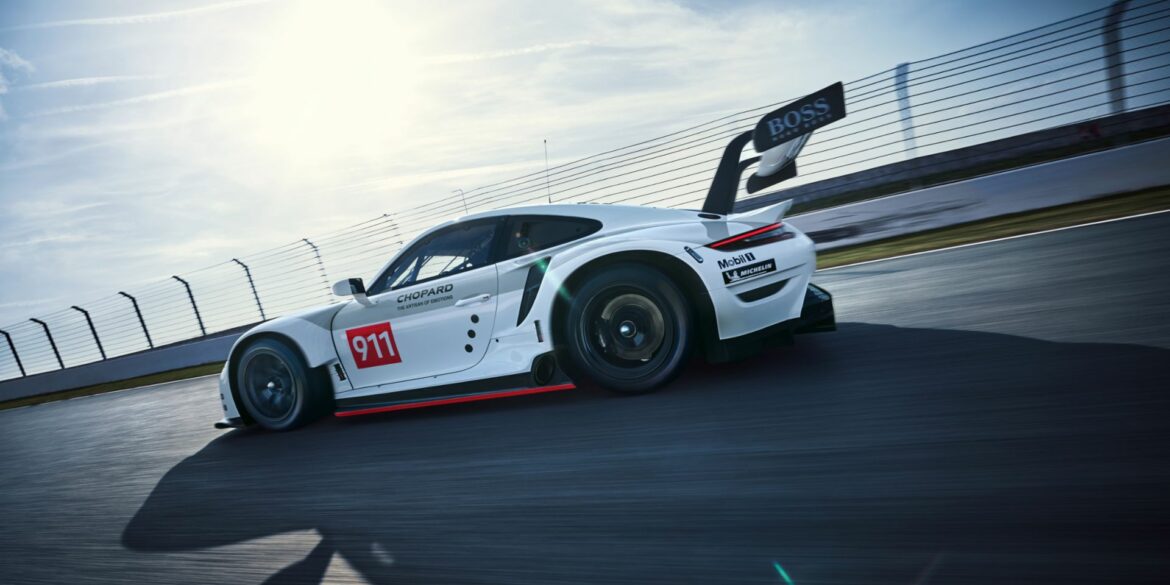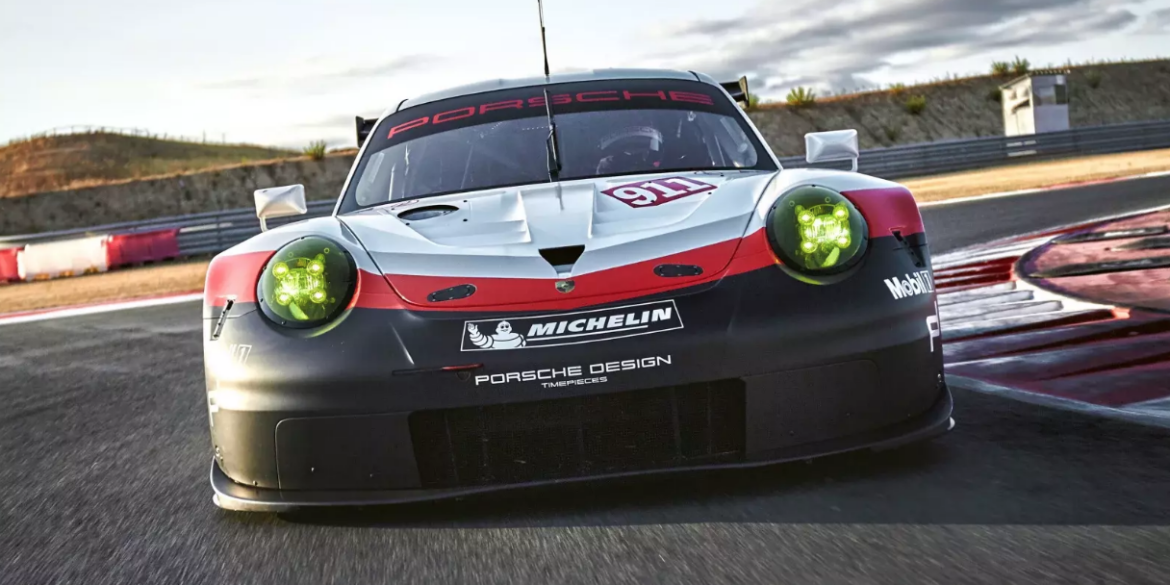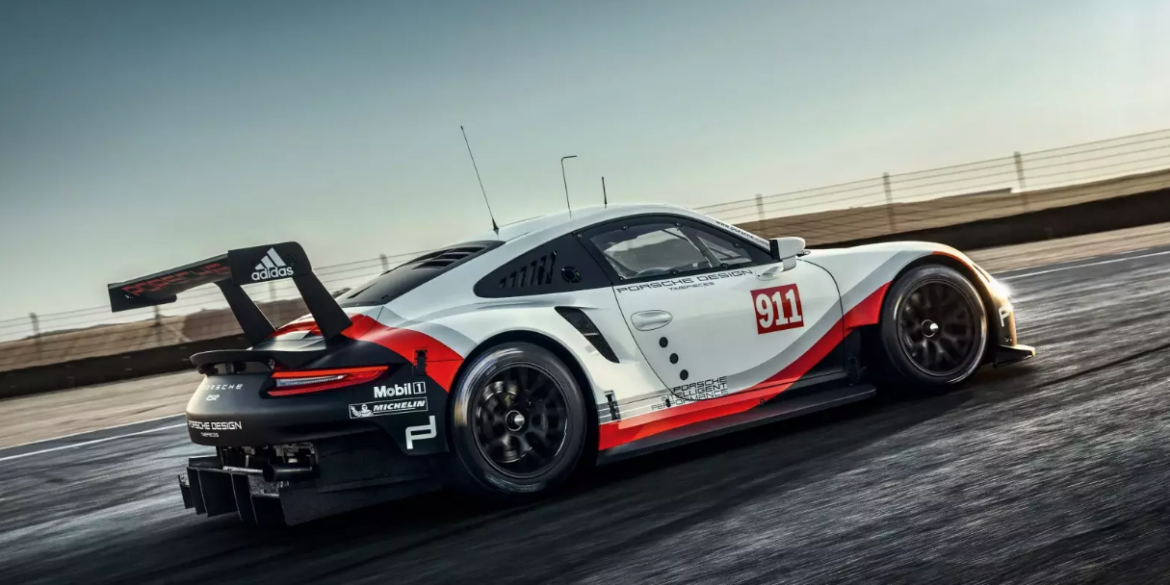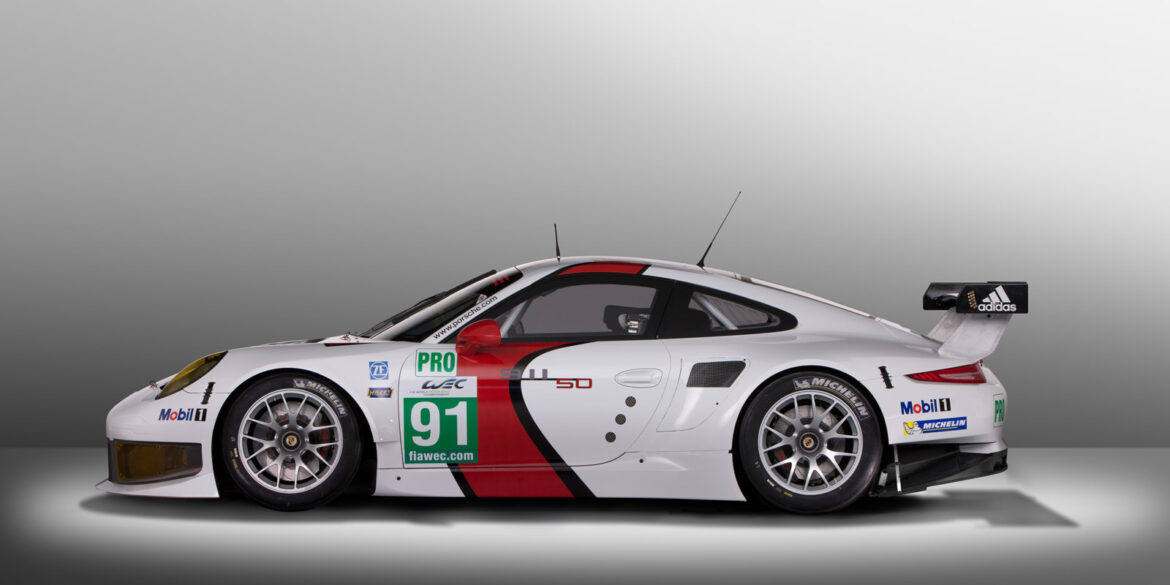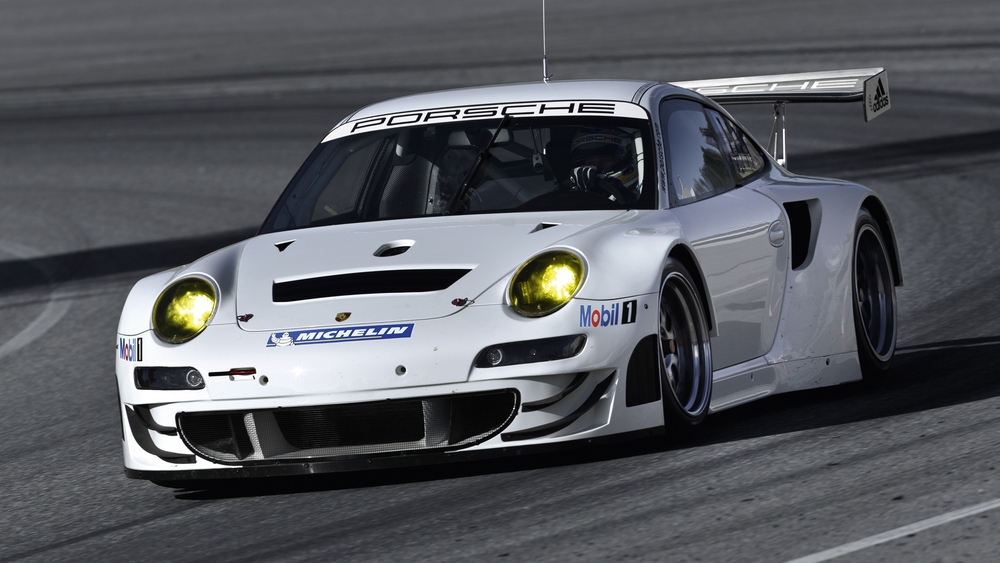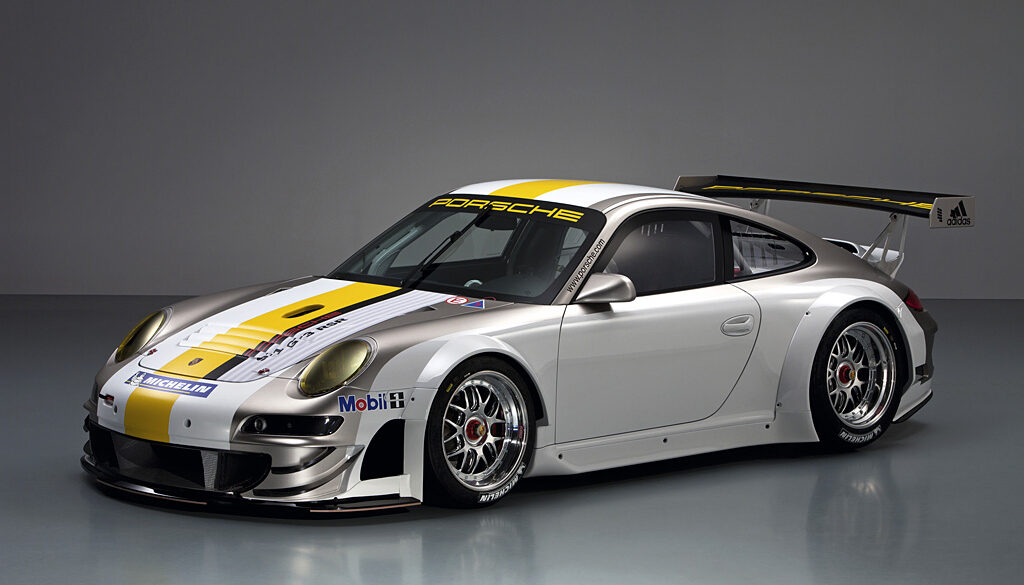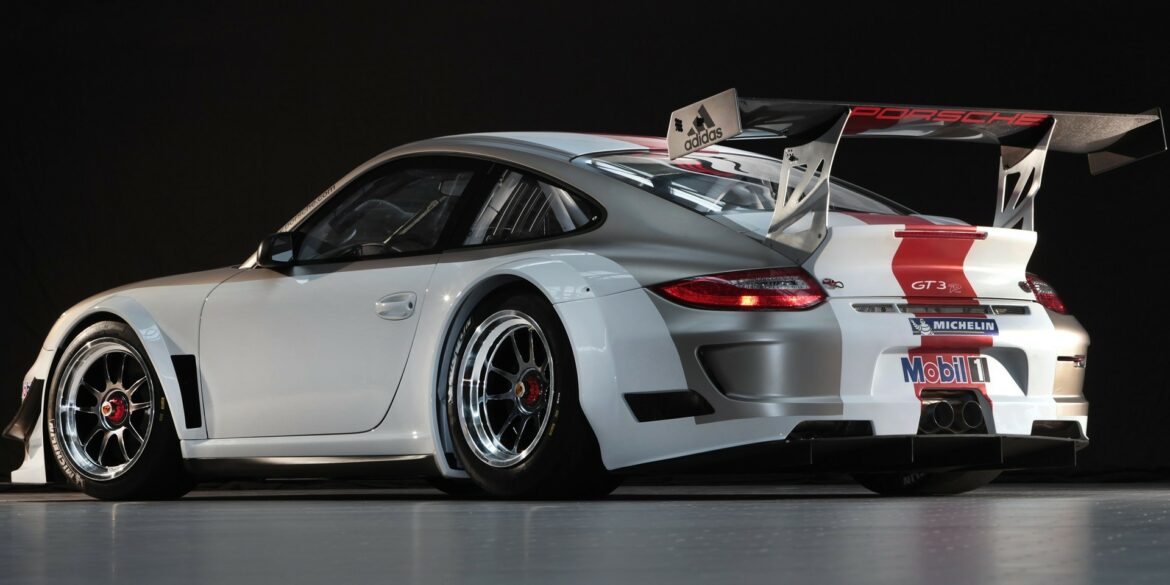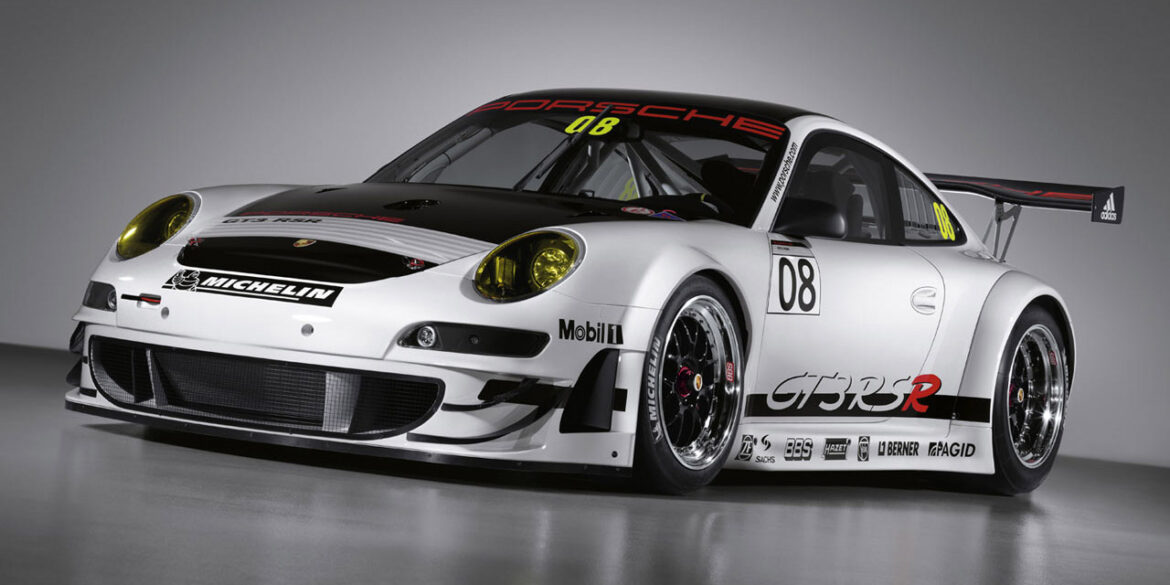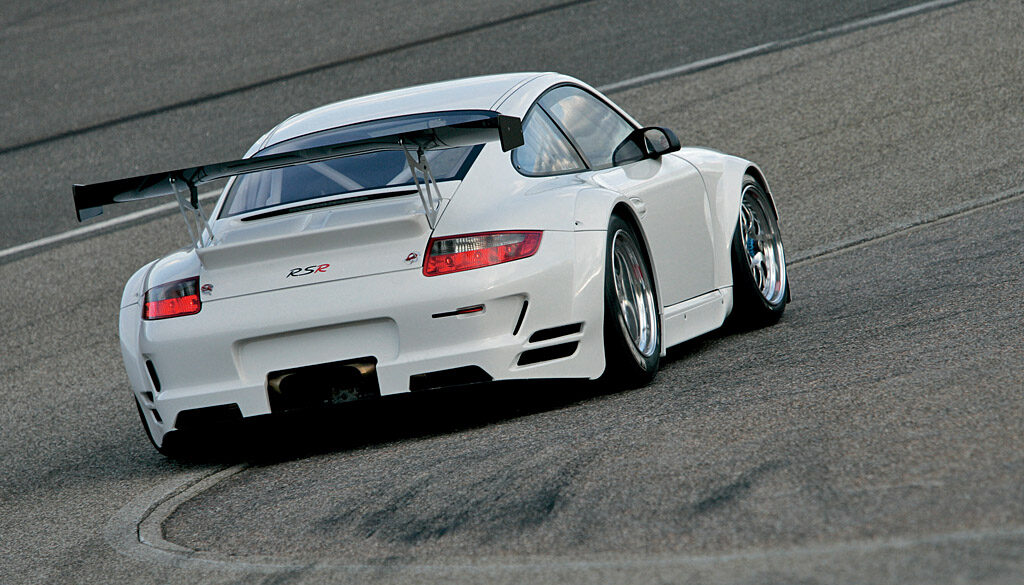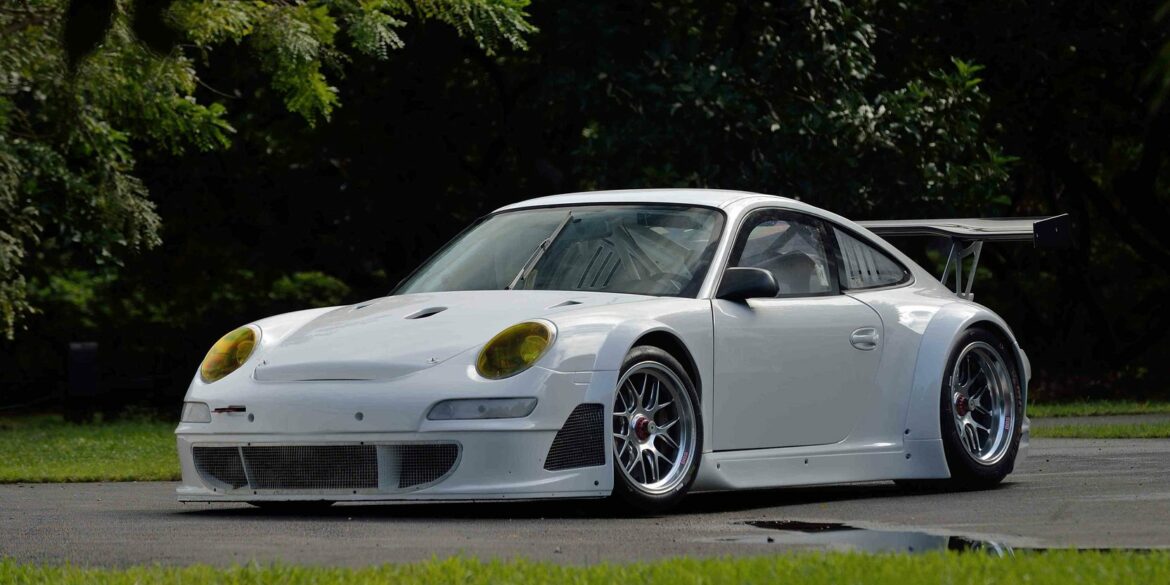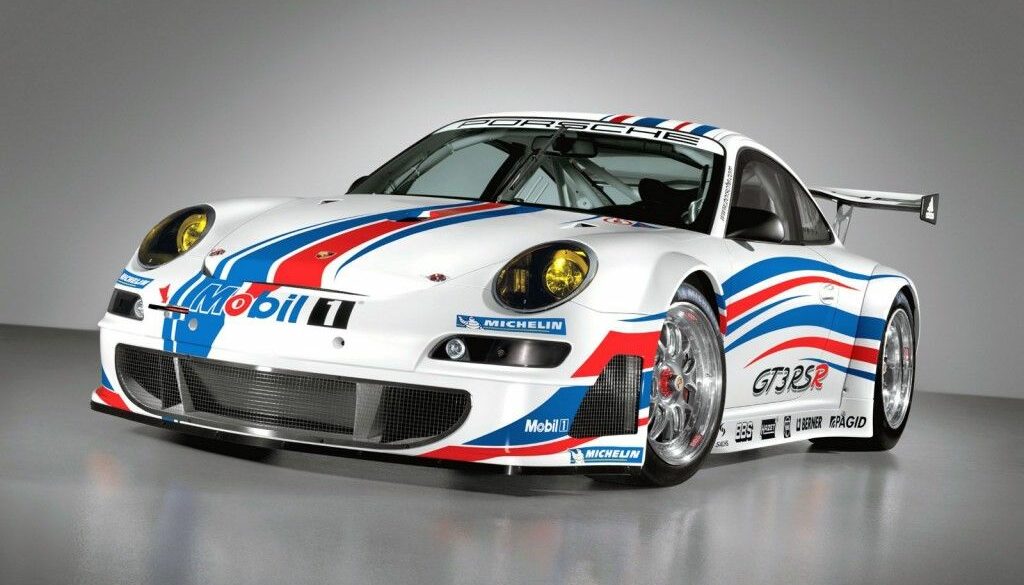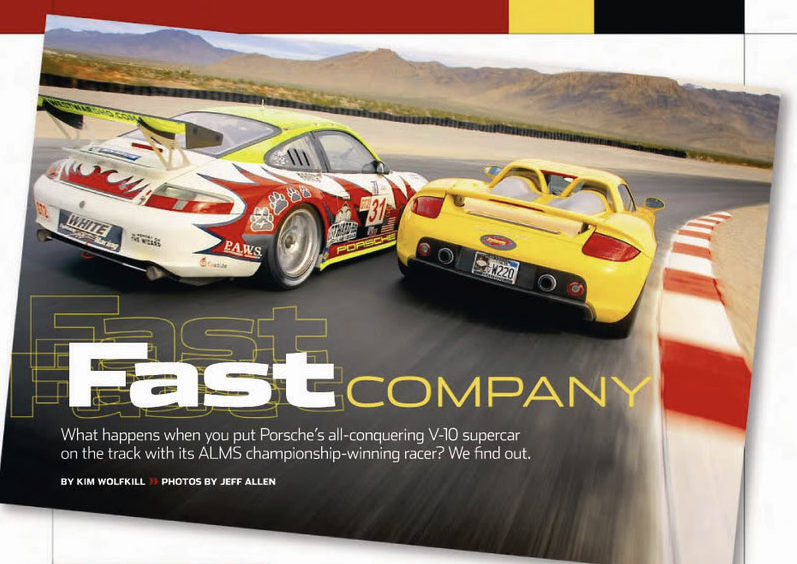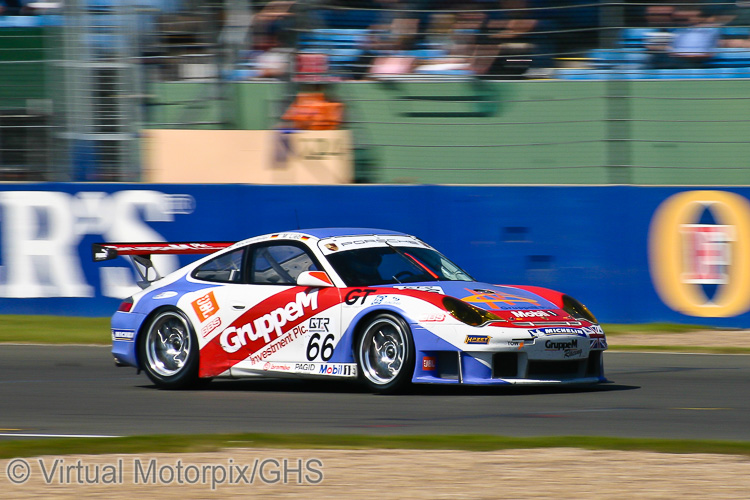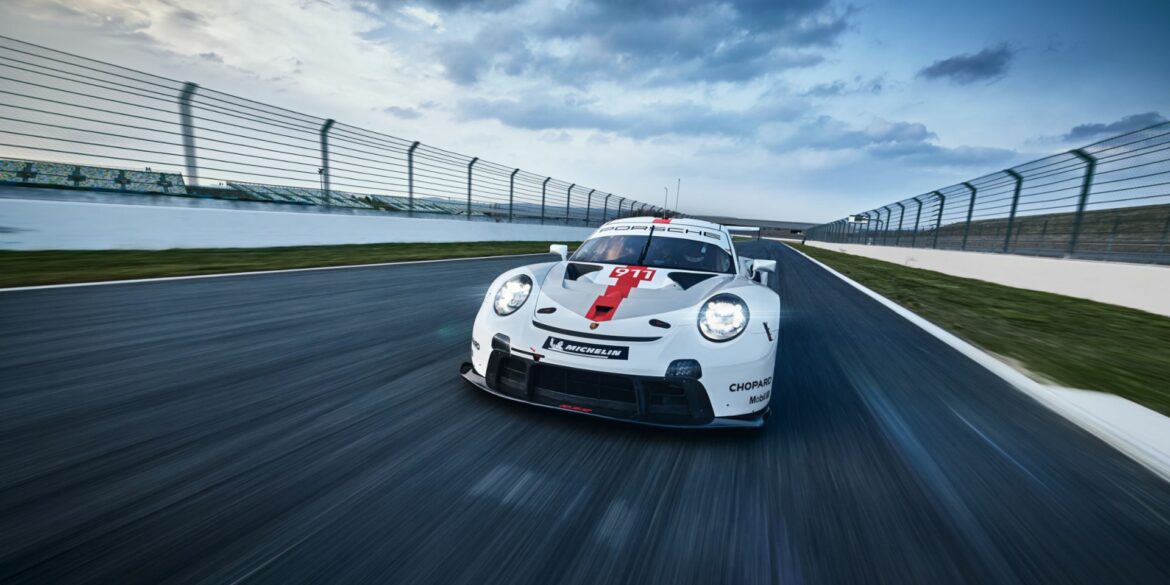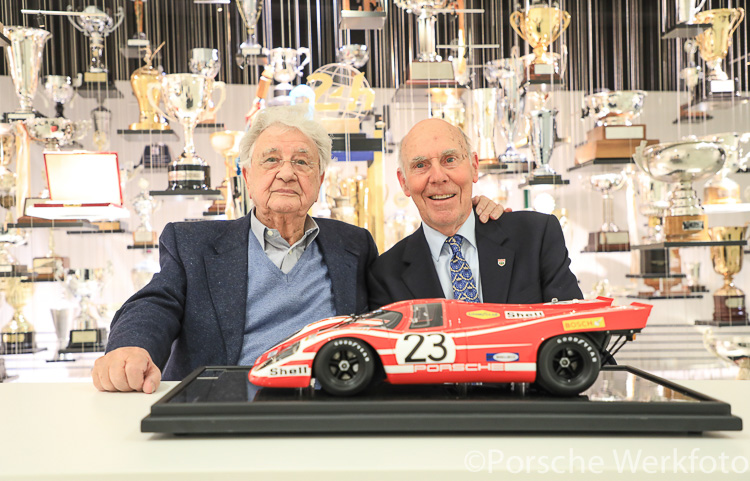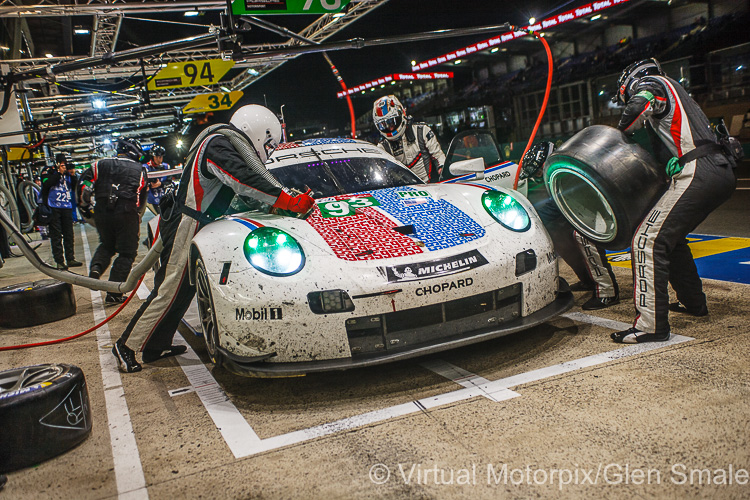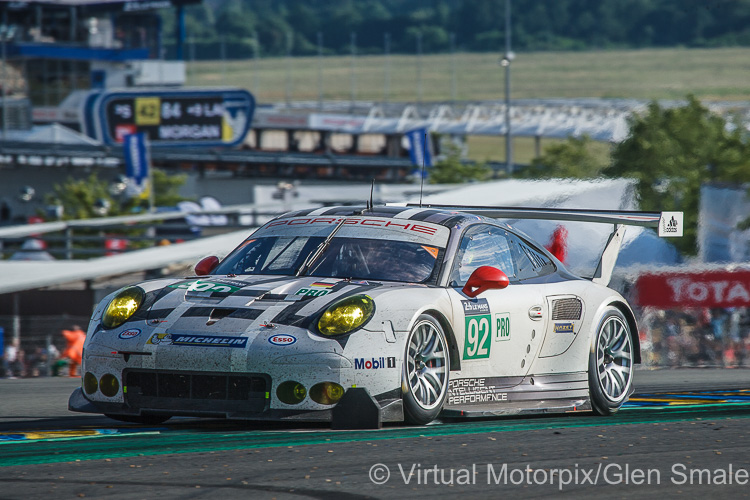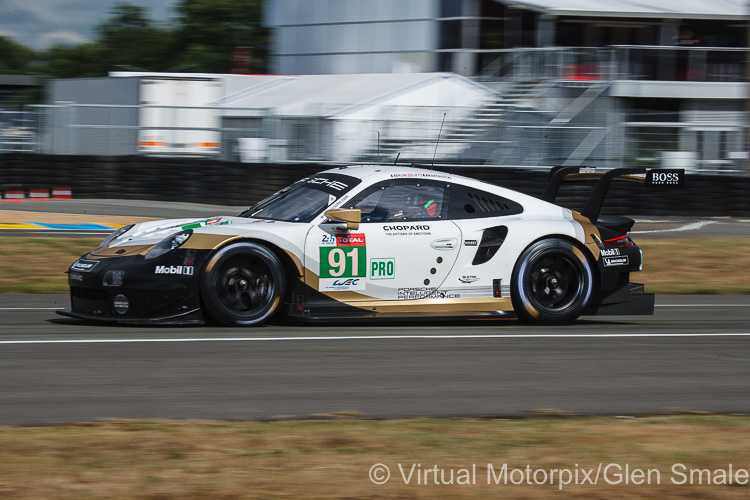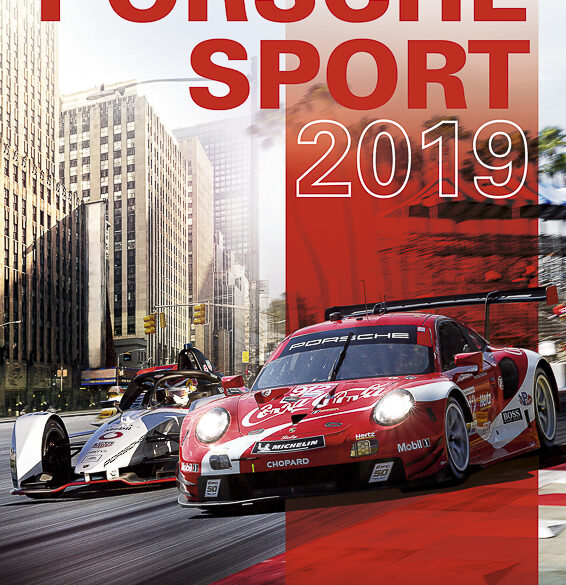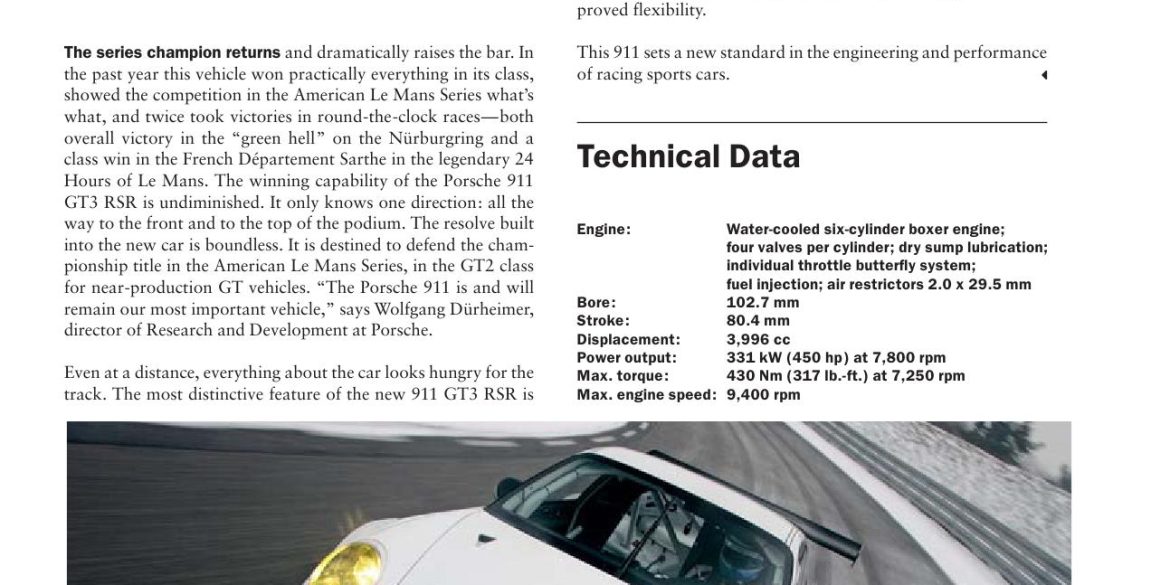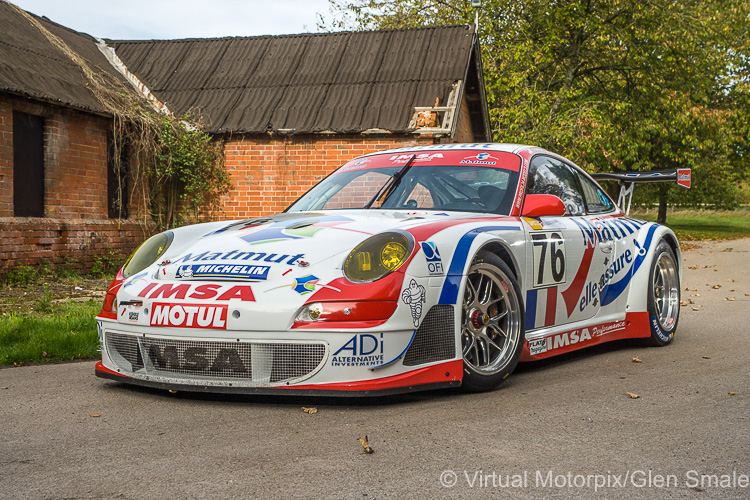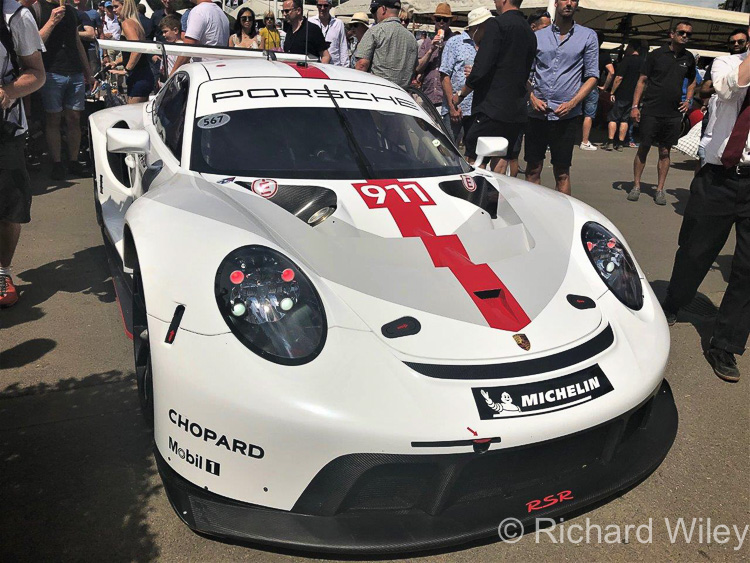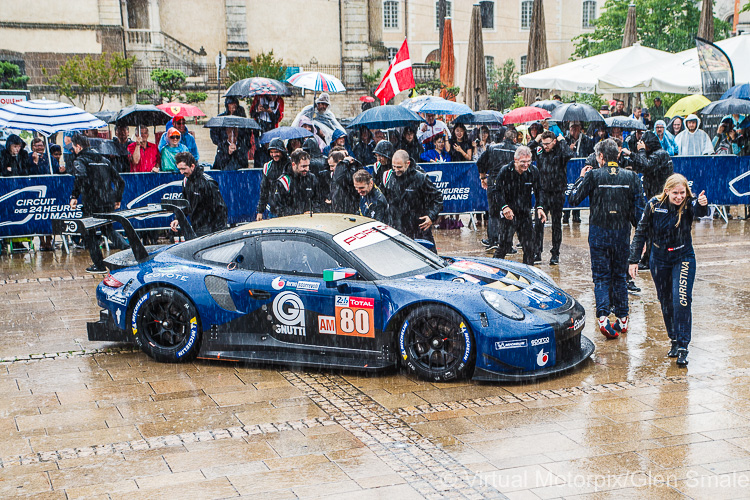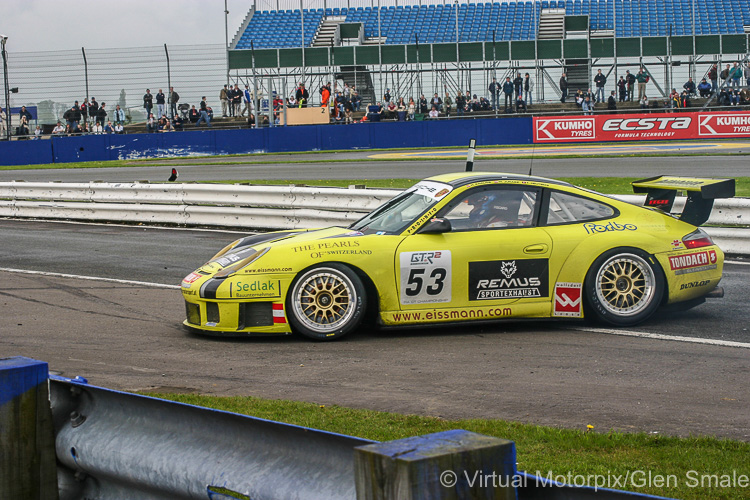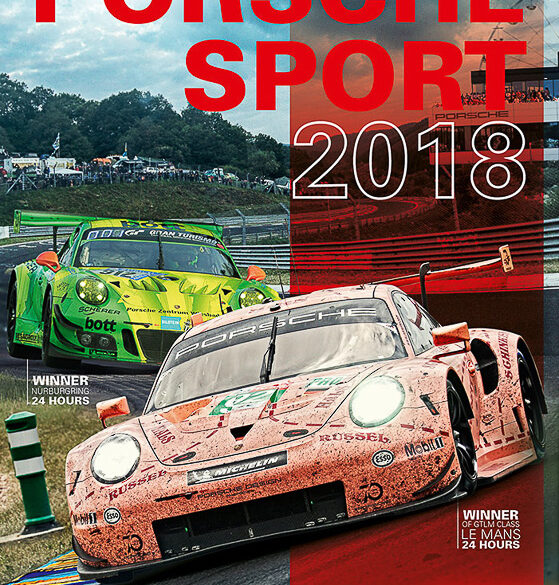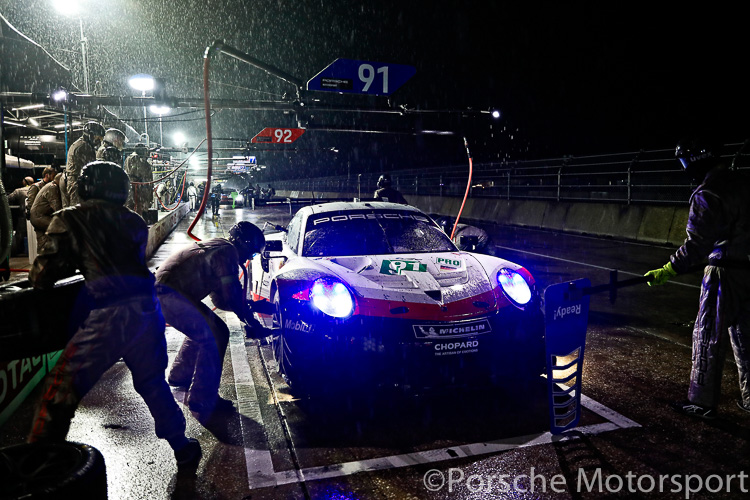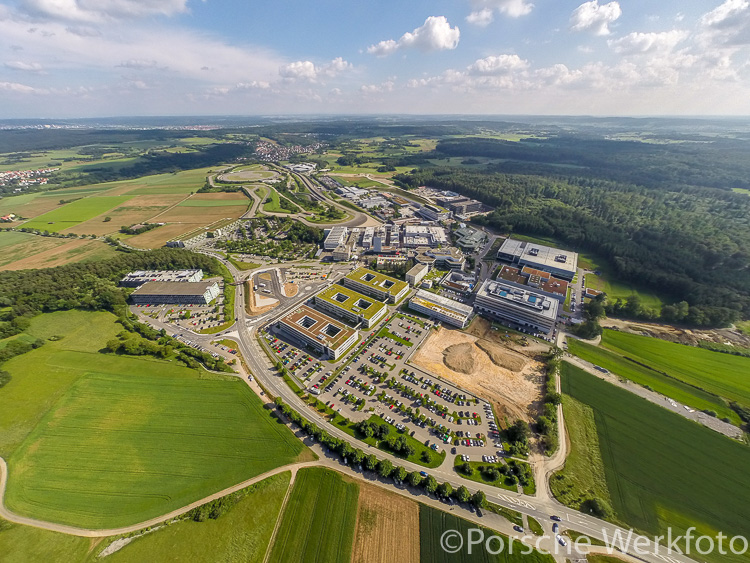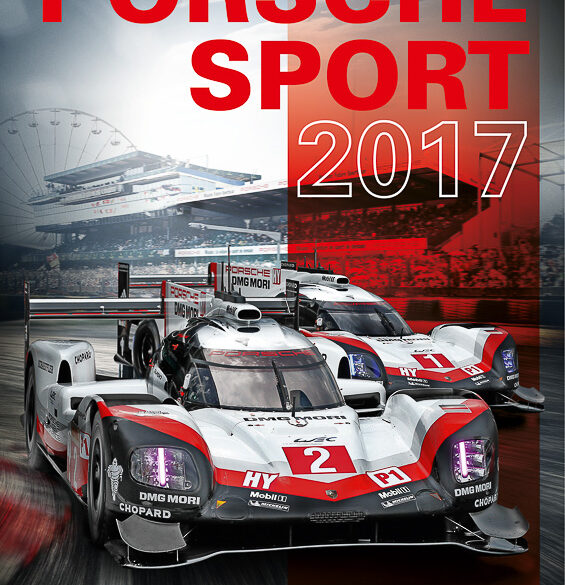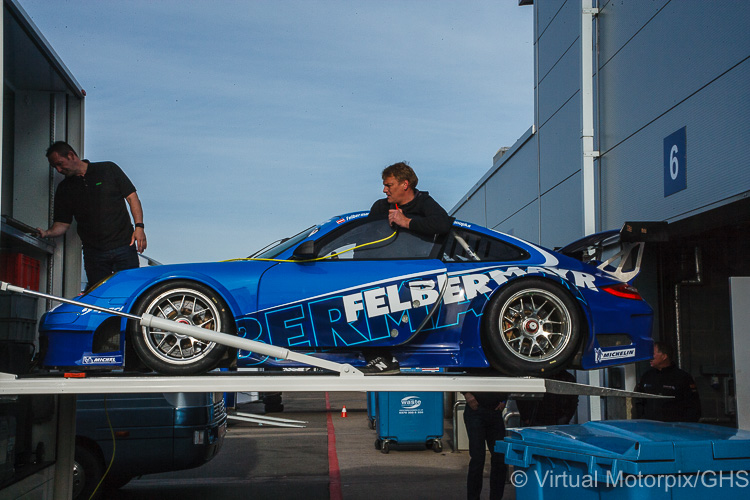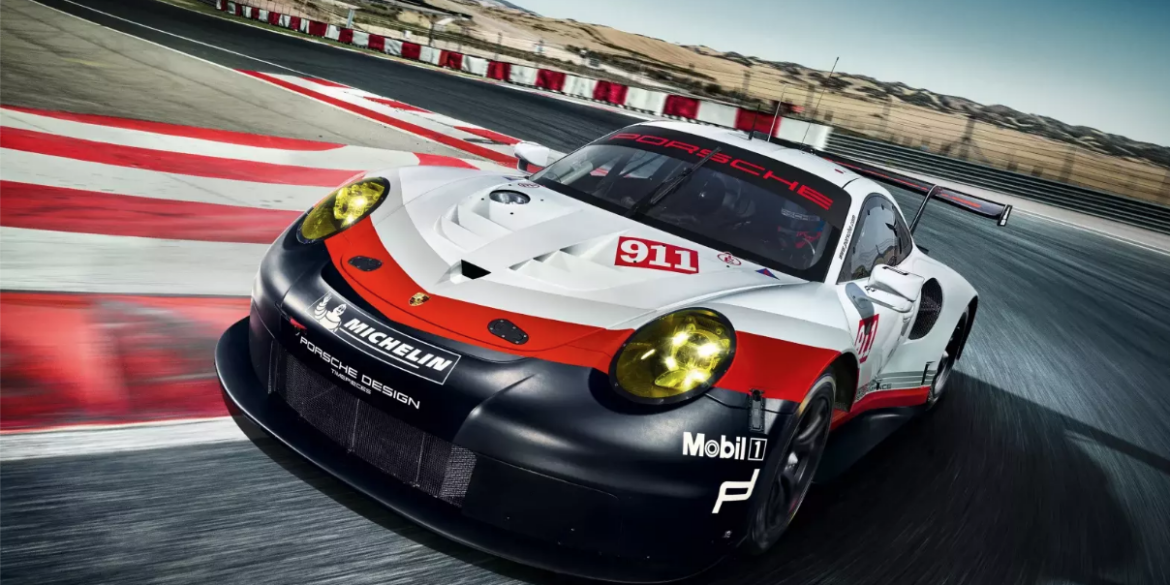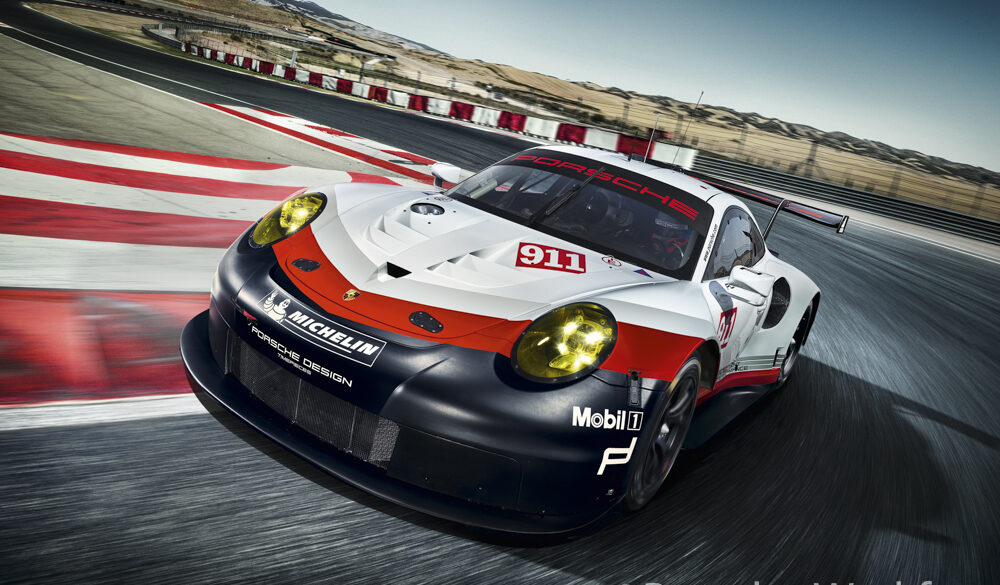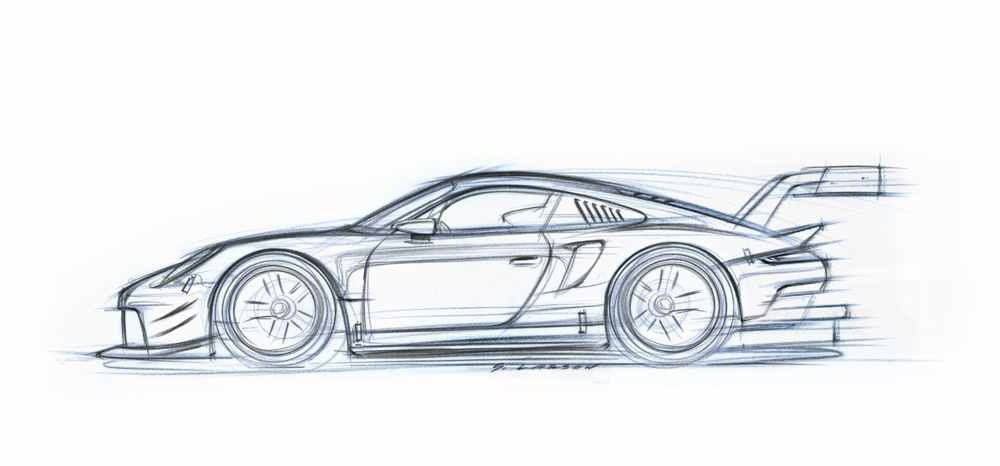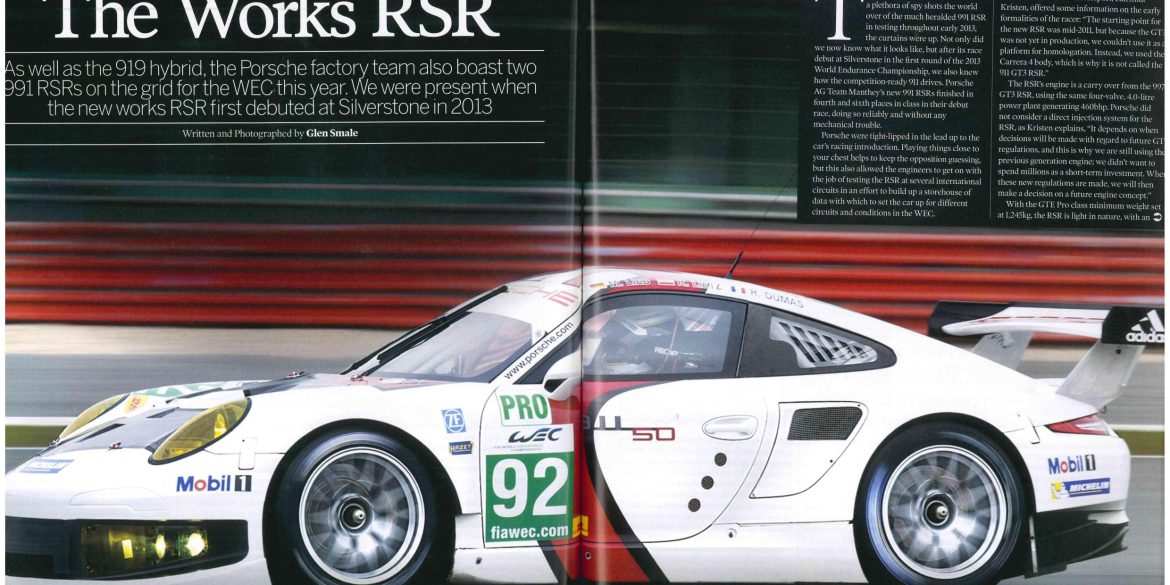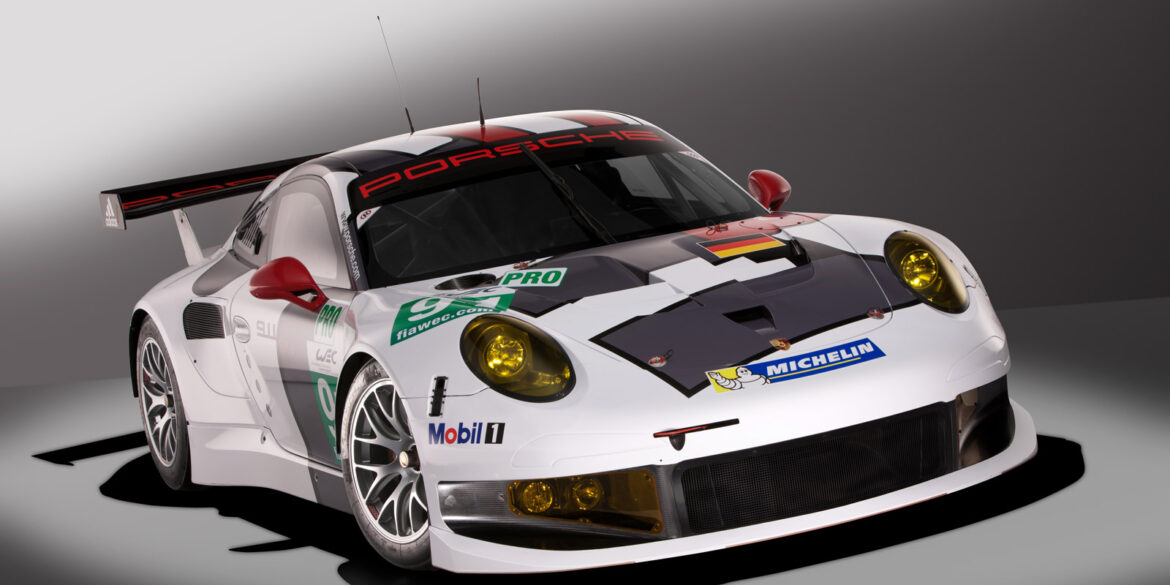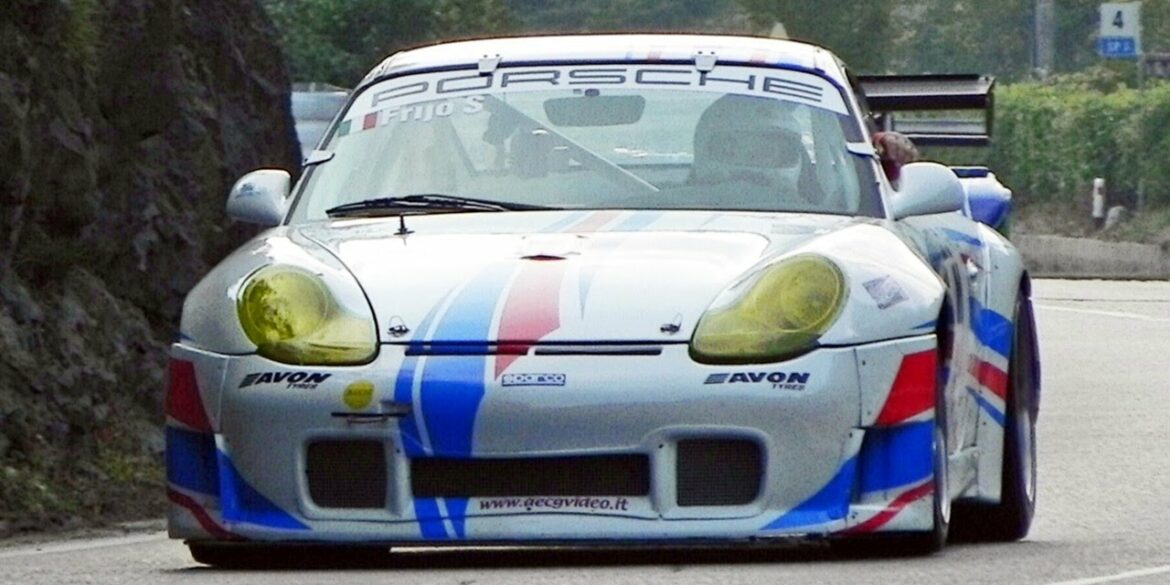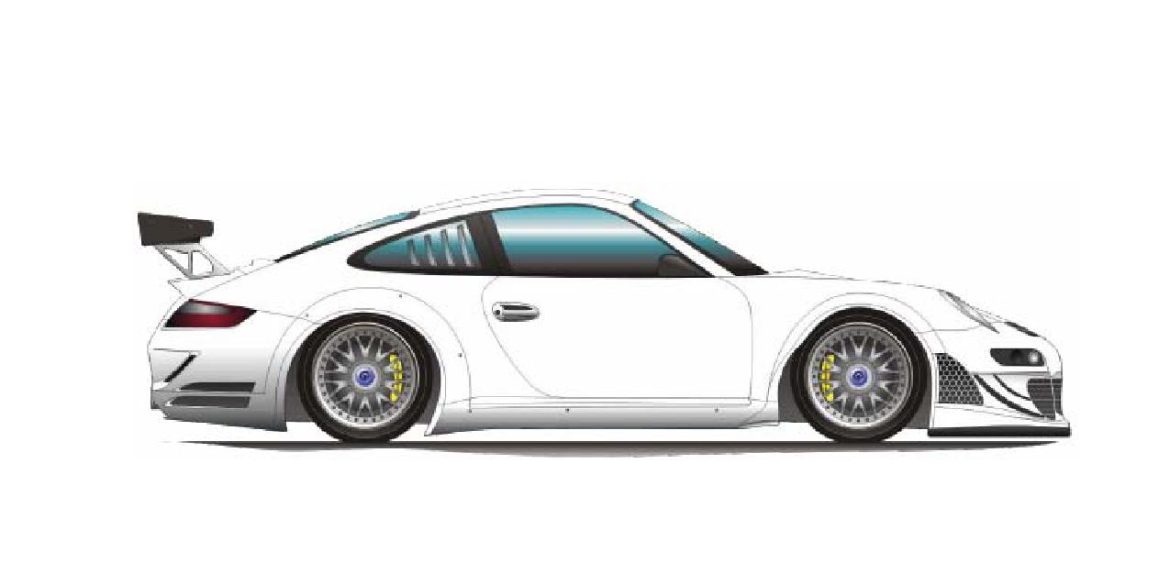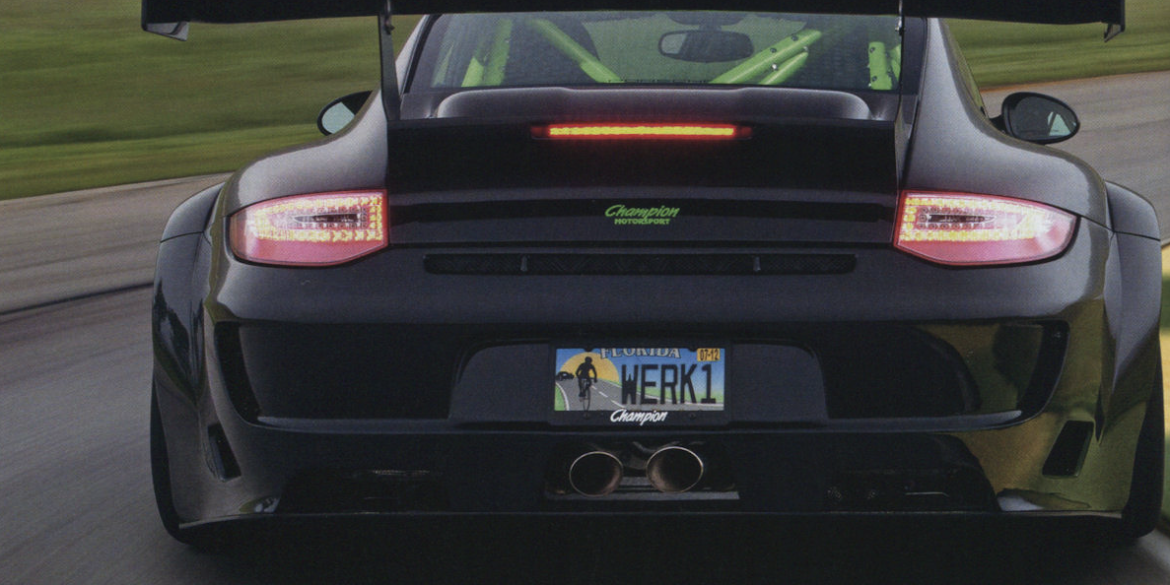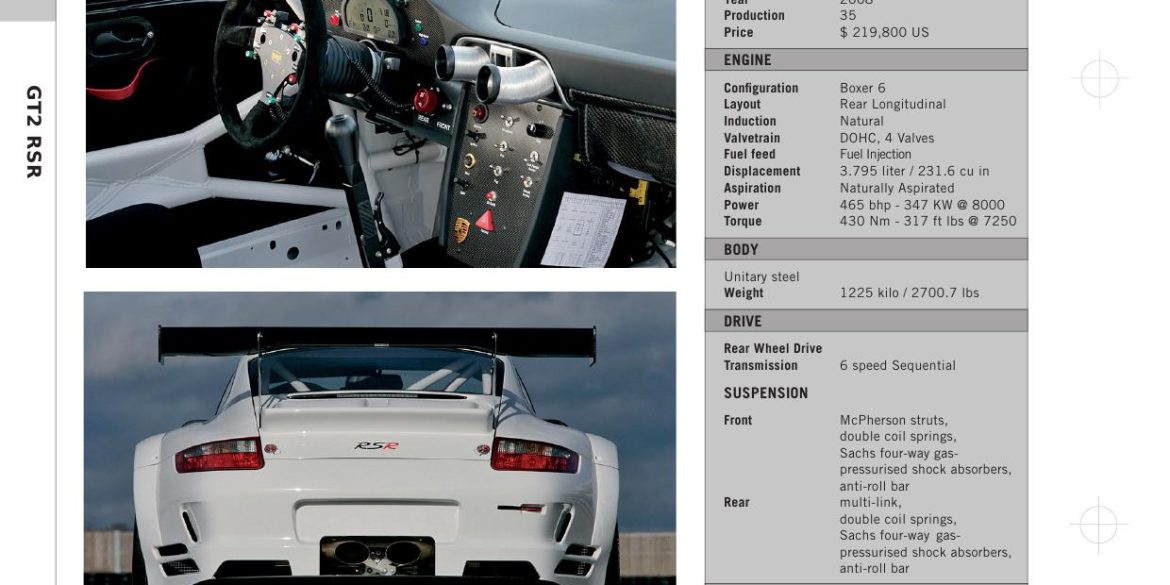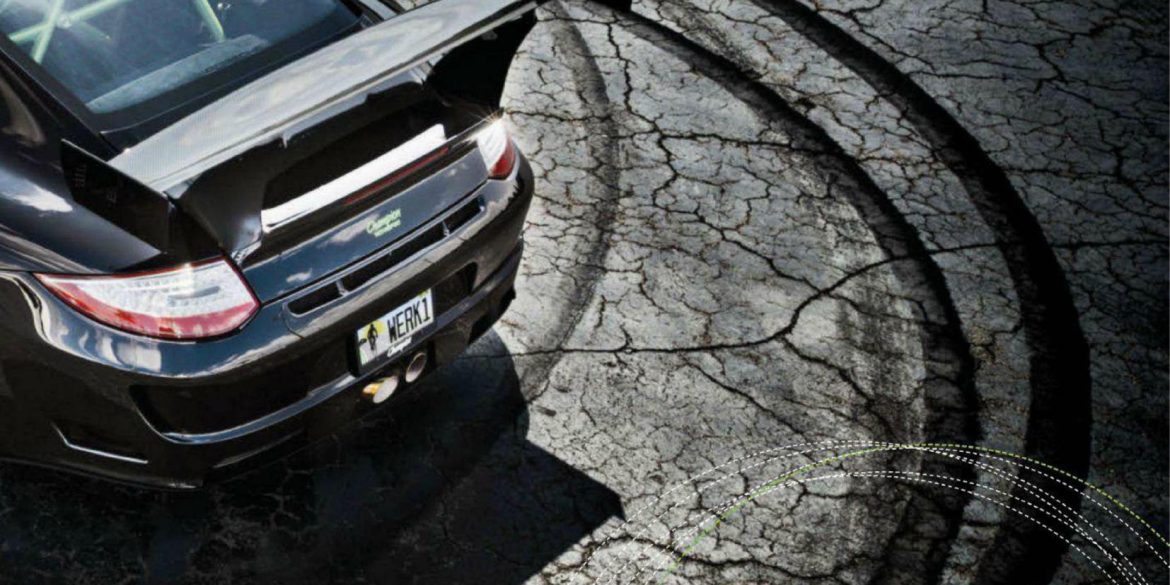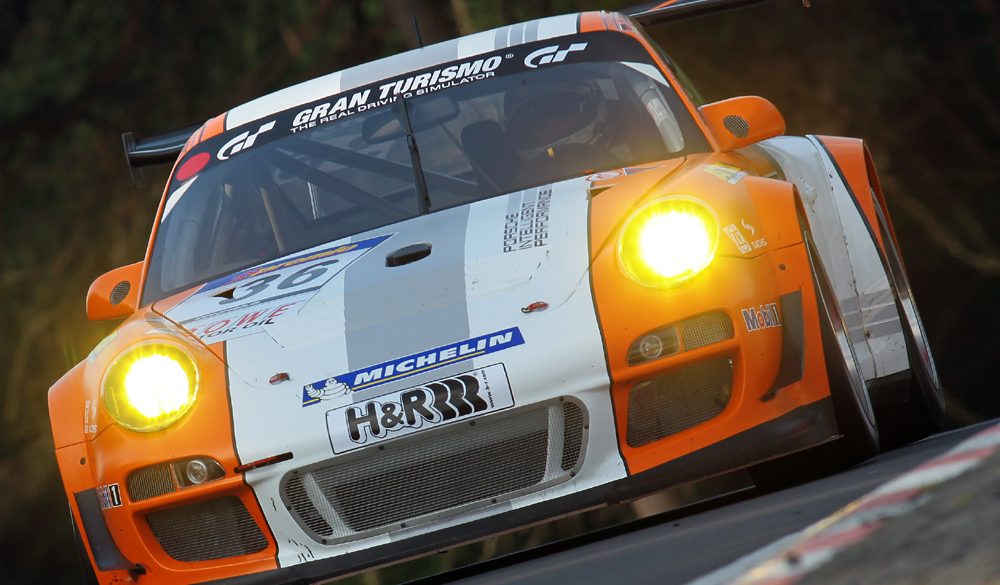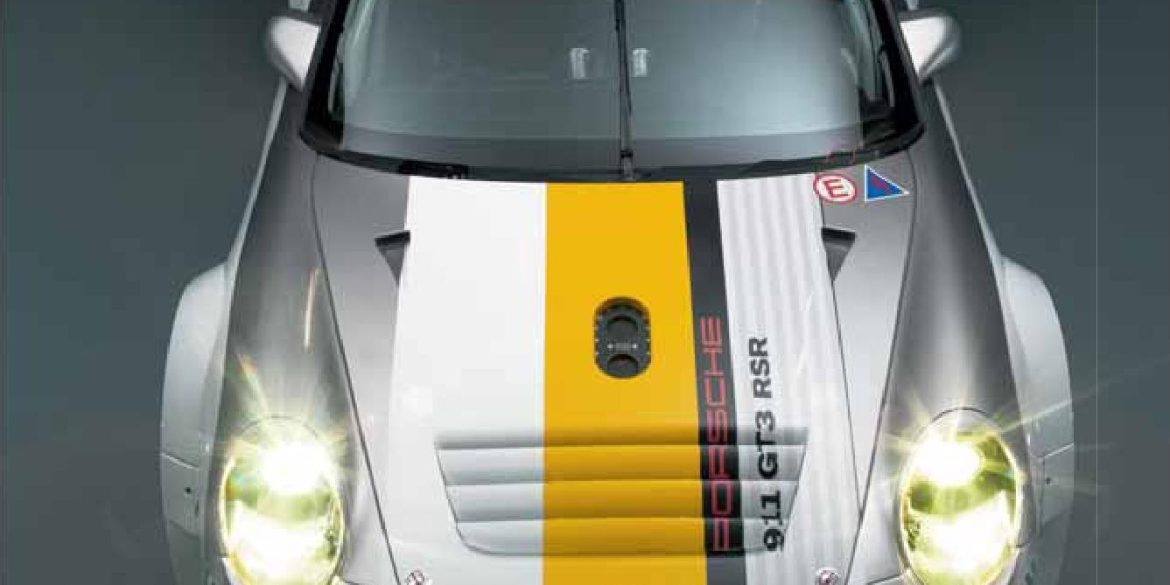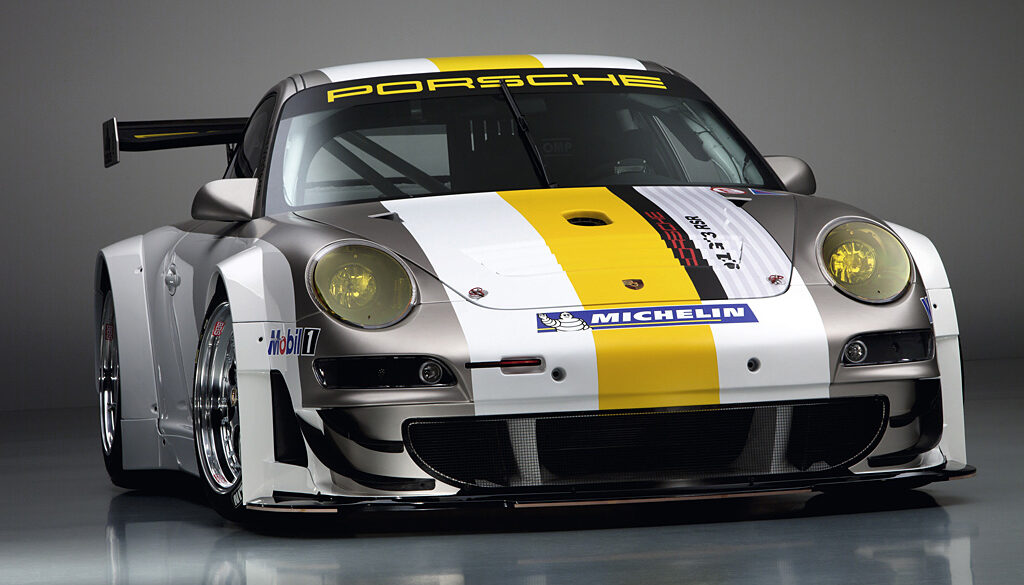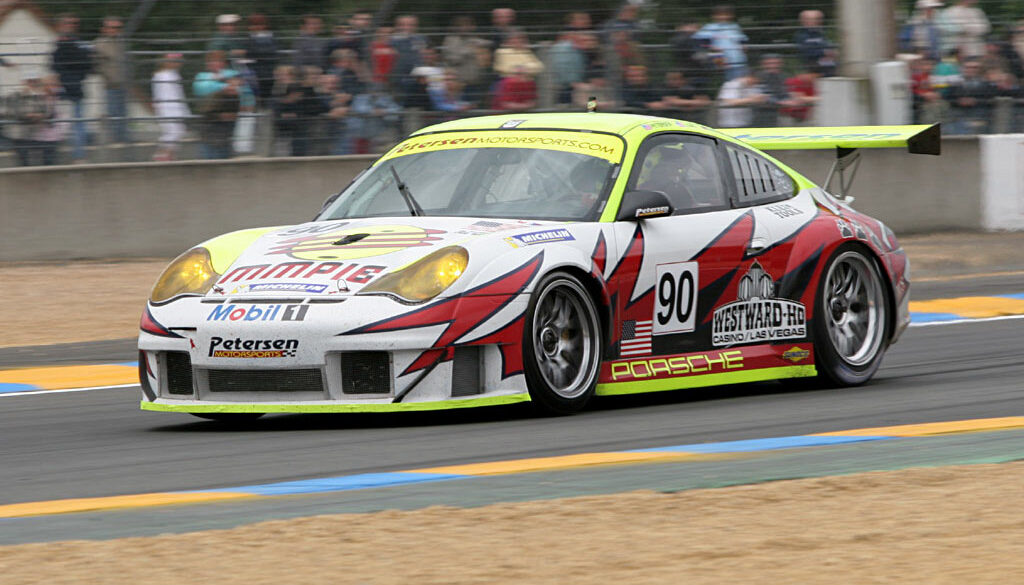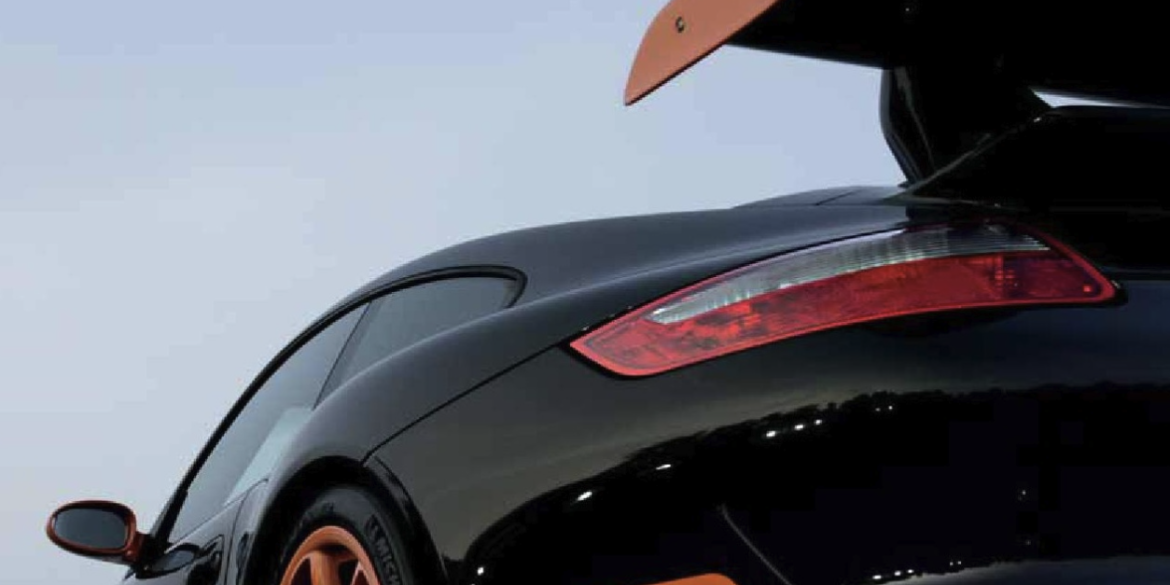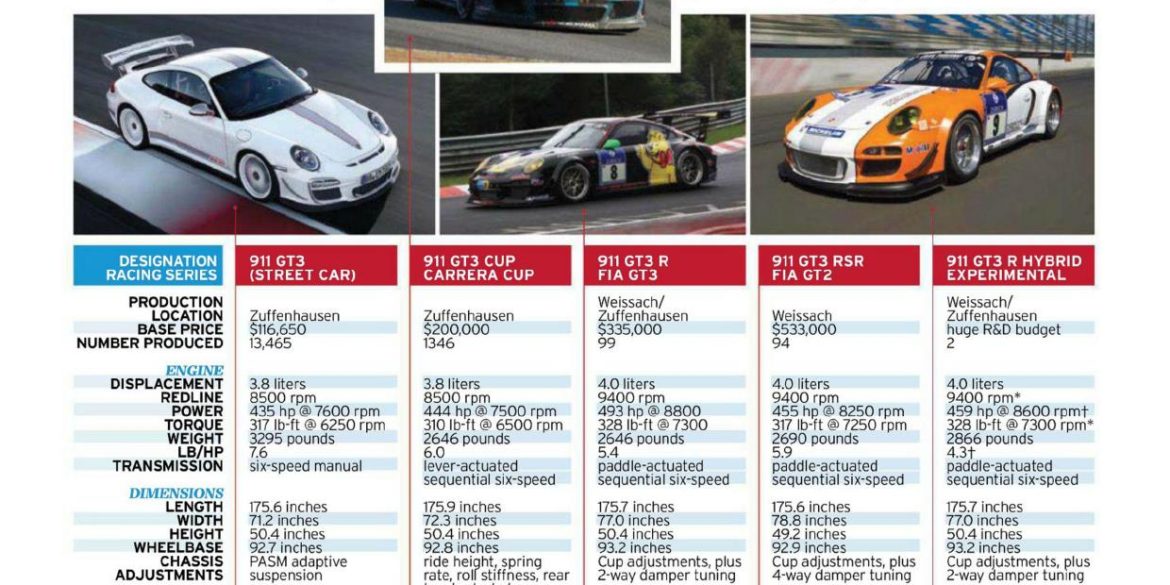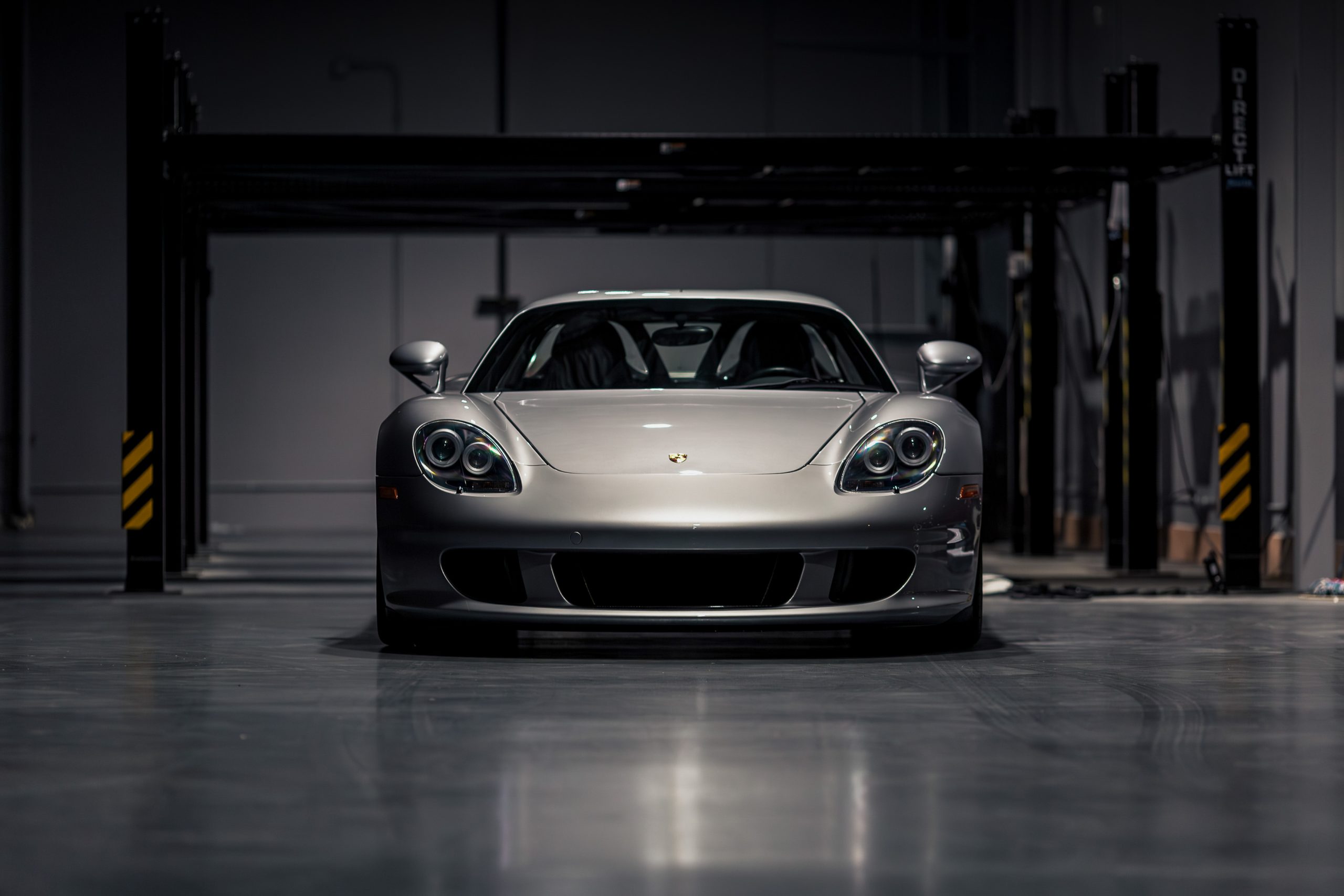Since its launch, the Porsche 911 has played a key role in motorsport, especially in endurance racing. Two years after its debut, the 911 S won the 2-litre GT class at Le Mans. By the mid-1970s, Porsche introduced the RSR—a race-focused 911 that became the foundation for decades of success...
The GT3 RSR, based on the Type 997, featured the latest version of the classic flat-six engine. In 2009, it underwent subtle revisions, adding more hood vents and optimizing air flow through the fascia and hood. Despite air-restriction rules limiting the updated M97/81 engine to 455 brake horsepower, the enlarged...
Based on the road-going 996 911 GT3 RS, the GT3 RSR features improvements to its predecessor in all key areas. The vehicle is available in an ACO (Automobile Club de l’Ouest) version for competing in Le Mans and in the American Le Mans Series as well as in a FIA specification. The...
For the 2004 and 2005 racing season, Porsche Motorsport used the 911 GT3 RSR. This near-standard racing sportscar aimed to keep private customer teams competitive in international Gran Turismo sport and to continue the success of the predecessor model which won its class at the Le Mans 24 Hours five...
In 2008, Porsche unveiled a new and much improved version of the GT3 RSR. Distinguished from its predecessor by a redesigned front end featuring aerodynamic enhancements, including “flick” spoilers on the front apron and optimized air ducting, the new model boasted increased downforce and reduced drag. Underneath the bodywork, the...
At the FIA World Endurance Championship WEC, two 911 RSR by the Porsche GT Team will be saying farewell to the GTE-Pro class with a special livery. The two 911s will be showcasing its striking colors from ten years of competition with the GT racing car in Bahrain, at the...
The sights and very loud sounds of 996 race cars tearing it up on track. Great way to start the morning...
No Subscription? You’re missing out Get immediate ad-free access to all our premium content. Get Started Already a Member? Sign in to your account here....
Porsche 911 RSR (991.2) (2019-2021) – Pictures & Gallery...
Porsche 911 RSR (991) (2017-2019) – Pictures & Gallery...
(2017-2019) Porsche 911 RSR (991) Technical Specifications Technical data Porsche 911 RSR model year 2017 Concept Single-seater race car for the LM-GTE category Weight/dimensions Weight: ca. 1,243 kg (base weight per regulations) Length: 4,557 mm (without splitter, rear wing, diffuser) Width: 2,042 mm (front axle) / 2,048 mm (rear axle)...
Porsche 911 RSR (991) (2013-2016) – Pictures & Gallery...
No Subscription? You’re missing out Get immediate ad-free access to all our premium content. Get Started Already a Member? Sign in to your account here....
No Subscription? You’re missing out Get immediate ad-free access to all our premium content. Get Started Already a Member? Sign in to your account here....
No Subscription? You’re missing out Get immediate ad-free access to all our premium content. Get Started Already a Member? Sign in to your account here....
No Subscription? You’re missing out Get immediate ad-free access to all our premium content. Get Started Already a Member? Sign in to your account here....
No Subscription? You’re missing out Get immediate ad-free access to all our premium content. Get Started Already a Member? Sign in to your account here....
No Subscription? You’re missing out Get immediate ad-free access to all our premium content. Get Started Already a Member? Sign in to your account here....
No Subscription? You’re missing out Get immediate ad-free access to all our premium content. Get Started Already a Member? Sign in to your account here....
Marc Lieb and Mike Rockenfeller won the GT2 class of the Tourist Trophy at Silverstone on 15 May 2005 driving the #66 GruppeM Racing Porsche 996 GT3 RSR (3.6-litre). Here the #66 Porsche exits Luffield on its way down the old pit straight. Mike Rockenfeller became a Porsche factory driver...
This was the fourth version of the 991 RSR - the first two came with the rear engine, then the first mid-engine version was launched (all 4.0-litre) and finally the mid-engined RSR 4.2 with the largest 911 engine ever made. The increase in the engine capacity is a question mark as on production models the capacities are decreased and turbochargers are used. The 991 RSR 4.2 didn't have anything in common with the production cars anymore. No change in terms of power-to-weight ratio.
The winning drivers from Porsche’s first Le Mans 24 Hour victory on 14 June 1970 (from L-R) Hans Herrmann and Richard Attwood (2019) Today, Porsche can boast a total of 19 overall victories together with countless class successes in the 24 Hours of Le Mans, the world’s most respected and...
This weekend is just one month short of what would have been the original 2020 Le Mans 24 Hours race weekend (initially scheduled for 13-14 June). As the United Kingdom approaches 8 weeks in lockdown as a result of the Coronavirus outbreak, we thought that we would dig into our...
This feature, the third in our four-part mini-series, picks up where we left off last time (Part 2: 2010-2012) and highlights the continued growth and success of the evergreen Porsche 911 on the UK and European motorsport scene between 2013 and 2016. Having benefitted from full media and photographer access...
Two of the world’s greatest endurance races for GT vehicles within eight days on back-to-back weekends show how Porsche Motorsport and its customer teams faced this extraordinary challenge during the 2019 season. Endurance, a stunning Porsche documentary available on YouTube and Amazon Prime, takes the viewer behind the scenes at...
Porsche Sport 2019 – © Gruppe C Motorsport Verlag The 27th publishing of this superb edition of Porsche Sport 2019 by Gruppe C Verlag, opens with this paragraph, “The year 2019 marked exactly half a century since a new competition sports car from Porsche was unveiled at the Geneva Motor Show....
No Subscription? You’re missing out Get immediate ad-free access to all our premium content. Get Started Already a Member? Sign in to your account here....
Le Mans 24 Hours, 16-17 June 2007: Busy grid just before the start of the race Porsche introduced their new 3.8-litre 911 GT3 RSR (Type 997) for the 2007 season, replacing the 3.6-litre 996 GT3 RSR. In many ways, this new model was a better all-round race car, being more...
Over the years, the Goodwood Festival of Speed has hosted hundreds of historic Porsches in its paddocks and up Lord March’s sinuous driveway, but this year the limelight was usurped by a newcomer from Weissach – the 95% new 992-based RSR for the upcoming WEC and IMSA campaigns. The fact...
Looking back to the 2018 Le Mans scrutineering of Monday 11 June, the teams, spectators and assembled media enjoyed equal quantities of bright sunshine and torrential downpours. The Ebimotors team gathered with their #80 Porsche RSR for the family snap just as another downpour descended upon all and sundry (drivers:...
Running in the GT2 class of the FIA GT Championship, the #53 Renauer Motorsport Team Porsche 911 GT3 RSR (Type 996, 3.6-litre) was driven by the Austrian pairing of Manfred Jurasz and Hans Knauss together with the Swiss driver Theo Heutschi. This was the opening round of the 2006 season...
Porsche Sport 2018 – © Gruppe C Motorsport Verlag For those who follow Porsche motorsport closely, the 26th edition of the well-known annual, Porsche Sport 2018, is definitely a book you want on your bookshelf. I have sung the praises of these publications before today, and for good reason, but...
There was a double victory for Porsche at Sebring, as the #91 Porsche 911 RSR of Gianmaria Bruni/Richard Lietz won round six of the WEC in Florida on Friday. Not to be outdone, Nick Tandy/Patrick Pilet/Frédéric Makowiecki also grabbed a win in the #911 Porsche 911 RSR in round two...
Weissach – Porsche Werk 8 – on 9 June 2016 By the late 1950s, the German Wirtschaftswunder was well underway and as the economy grew, so traffic density increased. This was particularly noticeable around Stuttgart often making testing on local Autobahnen inconvenient and it caused Ferry to think about creating...
Porsche Sport 2017 – Gruppe C Motorsport Verlag If you follow Porsche motorsport around the world, then Porsche Sport 2017 is not a book you want to be without. In fact, if you read this book from cover-to-cover, you would be one of the most knowledgeable people around concerning the...
Donington Park Circuit, 11 April 2017: Porsche 911 GT3 RSR (chassis #WP0ZZZ99Z9S799918) is off-loaded It was a clear day in April, typical of those late winter/early spring days when the weather was trying to impress by showing signs of warmth, but not really succeeding. My assignment that day at Donington...
Two decades after the different 911 GT1 cars the mid-engined 911 is back! In order to install a proper diffuser under the rear end of the 991, the engine had to make room for it and the engine/transmission unit was rotated 180 degrees. The extended rear diffuser, a top-suspended rear wing and the new side mirrors help to increase downforce with reduced drag. The FIA rules meant no turbo was needed due to power limits, so the normally aspirated 4-litre flat-6 was taken from the 991 GT3 R.
It’s out, the new model Porsche 911 RSR was launched this evening at the LA Auto Show. Porsche will tackle the 2017 racing season with its all-out newly developed GT racer which features an ultra-modern, flat-six unit positioned in front of the rear axle. The four-litre, extremely light aggregate features...
Porsche will unveil the new 911 RSR racing car at the Los Angeles Auto Show (November 18-27). The eagerly awaited and much speculated about 2017 racer will put to rest all the theories circulating on the new RSR. Absolute secrecy has prevailed as to the car’s layout and engine, but...
No Subscription? You’re missing out Get immediate ad-free access to all our premium content. Get Started Already a Member? Sign in to your account here....
As the rules do not permit higher output engines, the engine for the 991 RSR was taken from the 997 GT3 RSR 4.0 and the development work focused on the chassis, body, aerodynamics and the gearbox. A wishbone front suspension replaced the McPherson struts used in 997. A new development was the lightweight gearbox. One of the priorities in the development was the more evenly balanced weight distribution. The centre of gravity was lower, too.
Turn Up the Volume to the Perfect Flat 6 Screaming Sounds This video is about a couple of Porsche 996 GT3 RSs I saw during a few hillclimb races and a Red Bull livered 996 GT3 RSR I recorded at Monza Circuit. The RS is moved by a 3.6-liter flat-six...
No Subscription? You’re missing out Get immediate ad-free access to all our premium content. Get Started Already a Member? Sign in to your account here....
No Subscription? You’re missing out Get immediate ad-free access to all our premium content. Get Started Already a Member? Sign in to your account here....
No Subscription? You’re missing out Get immediate ad-free access to all our premium content. Get Started Already a Member? Sign in to your account here....
Porsche has announced the introduction of the new 2007 911 GT3 RSR (type 997) for the American Le Mans Series and other world GT racing venues. The latest version of the most successful racing sports car in history is based on the street production model 911 GT3 RS (model year 2007) and was launched in late 2006. The 911 GT3 RSR has wider rear fenders and rear track to improve performance capabilities over its predecessor. The car has also been developed to fit into the 1,225 kg class. The new car is built in accordance with the ACO LMGT2 Regulations and the FIA Article 257.
Based on the road-going 996 911 GT3 RS, the GT3 RSR features improvements to its predecessor in all key areas. The vehicle is available in an ACO (Automobile Club de l'Ouest) version for competing in Le Mans and in the American Le Mans Series as well as in a FIA specification. The 911 GT3 RSR features a modified front which improves downforce at the front axle. The 3.6-litre, six-cylinder boxer engine delivers 445 hp at 8,250 revs. Maximum torque is now 405 Nm at 7,200 rpm, with top revs reached at 8,500 (for the FIA specification with two 30.8 mm air restrictors). Race cars never got more exciting than this.


